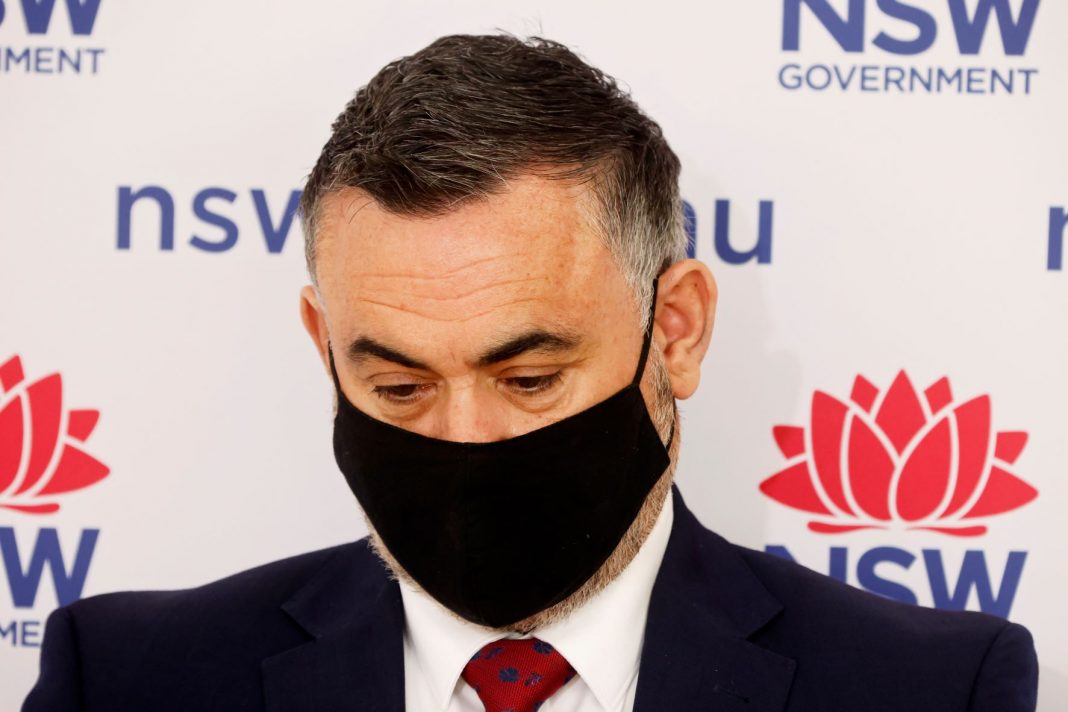A record number of COVID-19 cases have been diagnosed in western NSW, bringing the outbreak to an “extremely concerning level” as state leaders mull whether to extend the lockdown of the regions.
It’s been two weeks since Dubbo went into lockdown and 35 new cases there have bumped the total close to 300, with many cases in the vulnerable Indigenous community.
The rest of the state’s regional areas were sent into lockdown with two hours’ notice days later on August 14.
State-wide, 919 locally acquired cases were diagnosed in the 24 hours to 8pm on Tuesday – also a record – which also include seven in Bourke, five in Orange and one in Narromine and Walgett.
Across the Western NSW Local Health District, 15 people are in hospital, five are in intensive care and two have been placed on ventilators, chief executive Scott McLachlan told reporters on Wednesday.
“It’s definitely getting to an extremely concerning level,” he said.
Adding to his stress is declining testing rates and stubbornly low vaccination rates among the region’s Indigenous people.
Up to 750 people are being vaccinated per day at the pop-up vaccination clinic in Dubbo, and 54 per cent of people in western NSW have received their first dose of a COVID-19 vaccine, and 26 per cent their second.
“That’s increased by about between seven and eight per cent in the last two weeks,” he said.
“Disappointingly though, we’ve still got a very low rate of vaccination and particularly double vaccination for the Aboriginal community – it’s down at around 6.3 per cent.
“There’s no question vaccination is going to be our solution to save people from dying, to save people from getting really crook… and we know that there’s a large proportion of people that have currently got COVID are Aboriginal,” Mr McLachlan said.
NSW Deputy Premier John Barilaro acknowledged the case numbers did not bode well for many regions in NSW, with the crisis cabinet due to meet and discuss whether to extend the lockdown, currently due to end on Saturday.
“We haven’t made any decision… but as you can see in the numbers – the central west isn’t getting better, the far west, Hunter and New England – even though under control still has cases,” he said on Wednesday.
There are 71 new cases in the Nepean Blue Mountains region, 49 in western NSW, seven in the far west, eight in the Illawarra Shoalhaven, four from the Hunter New England and one from the Central Coast.
NSW Health‘s ongoing sewage surveillance program has also detected fragments of the virus at treatment plants in Bateau Bay and Toukley on the Central Coast and Merimbula on the south coast.
Mr Barilaro said crisis cabinet would take advice from NSW Chief Health Officer Kerry Chant and “make a decision and will do it sooner rather than later”.
“The reality is, it is about protecting lives and making sure we don’t lose control in regional and rural NSW.”
The government is resisting calls for Dubbo to be deemed a hotspot local government area, with the number of active cases in the city double that of hotspot areas like Strathfield and Burwood in Sydney.
Residents of those areas are under stricter lockdown conditions, including a curfew.
Local MP Dugald Saunders said the government would follow the health advice, but population density played a key role in the decision to designate local government areas as hotspots.
“At this point in time, the benefit cost ratio probably looks like it is not the way to go,” the Nationals member said.
“In places like Dubbo, even though we’re a large inland city, the density of people is nowhere near the same.”
Sydney and its surrounds will remain in lockdown until at least September 30.
AAP



